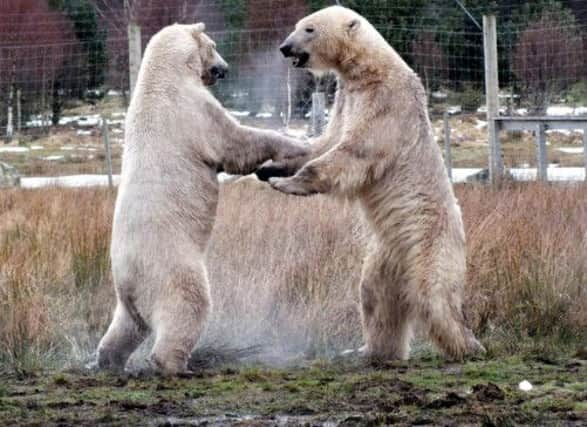Creating an appropriate captive environment is no easy task


The individual who stimulated a modern, science-based approach to managing animals within a zoo environment was a Swiss called Heini Hediger. He coined the term “zoo biology” to encompass all aspects of the study and practice of zoos.
In his seminal text, Man and Animal in the Zoo: Zoo Biology, published in 1970, a significant chapter deals with what constitutes an appropriate captive environment for a wild animal, one that allows the occupants to display as wide a range of their behavioural repertoire as possible.
Advertisement
Hide AdAdvertisement
Hide AdHediger suggested that quality of space was far more important than quantity. For example, keeping a primate in an enclosure as large as a football pitch, but just as featureless, would be much less appropriate than an area an eighth of the size but with extensive opportunities to climb.
In principle he was correct, but there are other species where both a complex and also a very large area are an absolute requirement.
In 2009, I was tasked with designing a large natural polar bear enclosure, initially to house Edinburgh Zoo’s elderly female, Mercedes, but with a view to housing the species long term as part of the European Zoo Association’s managed breeding programme.
The vast majority of polar bear exhibits in zoos are multi-million pound projects that use a lot of concrete and steel. Due in part to the cost, they are often not particularly large.
The goal was to enclose an area of at least five acres of rugged Highland landscape, but as our budget was limited to a few hundred thousand pounds, we would need to address the problem from a quite different perspective.
Polar bear’s brain
The polar bear is the largest and most dangerous of the eight species of bear – an adult male polar bear can weigh almost a tonne and reach the height of four metres when standing on its hind legs.
Potentially, the polar bear’s most dangerous, and interesting, attribute is not its sheer size, strength or sharp claws and teeth – but its brain. Polar bears are incredibly intelligent, capable of solving problems, and if they had thumbs, they would be apes.
Their intelligence, and the fact that they can become quite stressed in smaller, unchallenging, traditional enclosures, has meant that the history of the species in captivity has been a chequered one.
Advertisement
Hide AdAdvertisement
Hide AdHowever, the size and varied nature of the Highland Wildlife Park site made it a fairly straightforward process to identify a suitably large area that would expose polar bears to a wide range of terrains, with vegetation, places to swim and opportunities to seek shade, avoid visitors and enclosure mates when required.
The area was also of sufficient scale to allow for the introduction of a wide variety of objects, both natural and artificial, to stimulate play and the polar bear’s natural curiosity.
The problem was containing the area in a safe and affordable manner. Agricultural electric fencing technology has been used to create large secure spaces for a large number of species, including other bear species, and so I was fairly confident that a similar approach would work for polar bears.
Taking a range of ideas from a variety of sources, including a tourist camp on the edge of Hudson Bay in Canada, a combination of an inner electric fence with a tensioned deer fence behind to act as a buffer was the chosen approach.
To habituate the animals and so avoid stress or accidents, each bear was introduced carefully and in a controlled way to an electric fence, and because of their intelligence, they touch it only once or twice at the start of the process and then avoid it entirely. The current is obviously not lethal but it does give a sharp shock. The bears are not stressed by the constant presence of the fence and are often seen sleeping or playing inches away from it.
Three years on
We are three years on now and the enclosure currently holds Walker and Arktos, two very large, robust male polar bears. The fence has surpassed all expectations, we have one of the largest polar bear enclosures in the world and it is increasingly being used as an example of best practice within the zoo community.
Advances in modern zoo enclosure design have usually come with a dramatic increase in cost and not always with an increase in the animals’ welfare. Because our solution was inexpensive, it allowed us to create an environment for the animals that was far larger and more dynamic than the norm, which has resulted in us meeting the species’ high welfare needs.
• Douglas Richardson is head of living collections, Highland Wildlife Park, Royal Zoological Society of Scotland www.rzss.org.uk